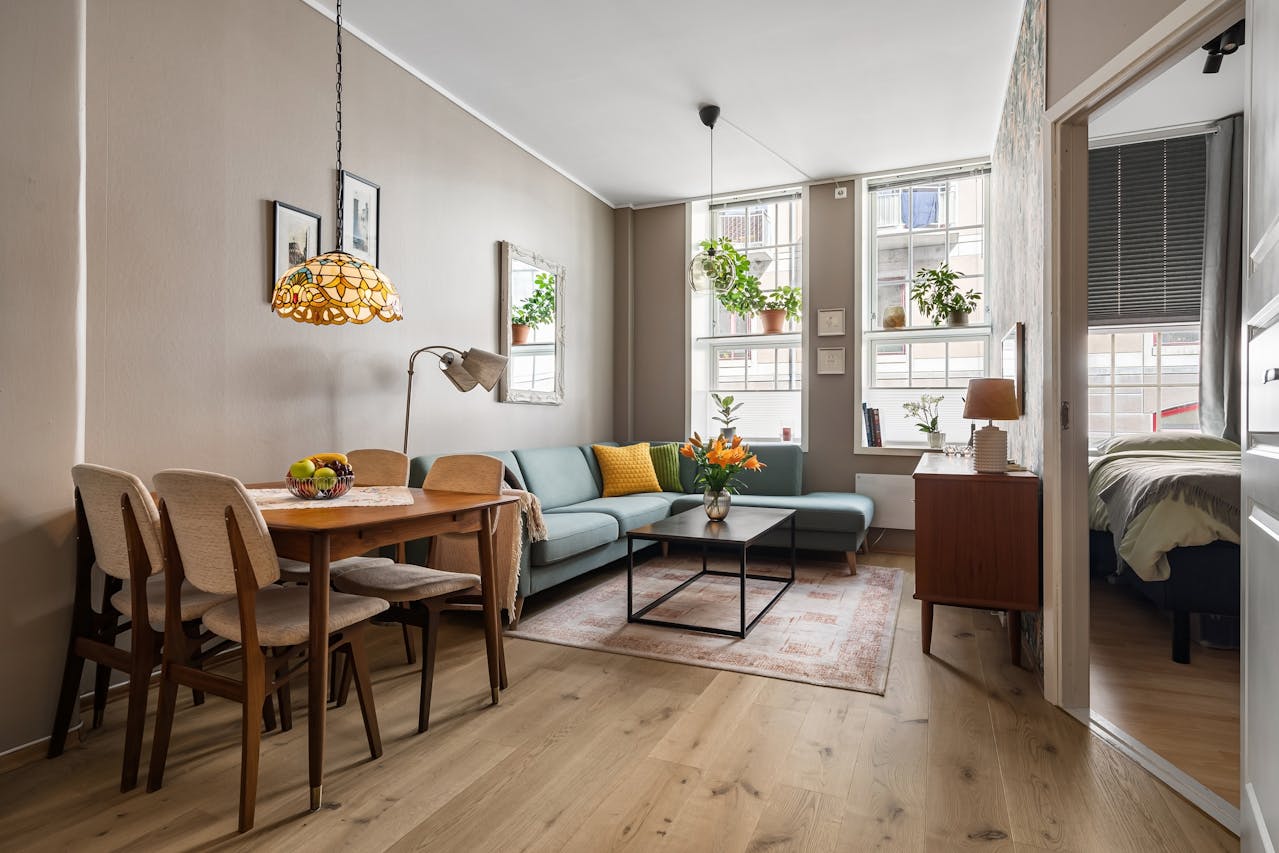You can choose the best pieces of wood and use the best wood installation methods, but if it doesn’t acclimate properly, your floors won’t last. Acclimation is the process of letting the wood adjust to your home’s temperature and humidity before it’s installed. It’s the most effective way to prevent common issues like gaps, cupping, and warping.
Want your wood floors in Denver to look amazing and last for decades? Acclimation is key. Let’s learn about the importance of acclimation and why it matters.
Table of Contents
ToggleExplaining Acclimation and Why It Matters
Acclimation means allowing wood to adjust to its new environment before installation. Because wood is hygroscopic, it absorbs and releases moisture depending on the surrounding air. As the leading wood flooring contractor in Denver, we know that if you don’t give your wood time to acclimate, you’ll encounter the following issues:
- Cupping or buckling, when the edges rise above the center of the plank
- Gaps between boards caused by the wood shrinking after installation
- Uneven surfaces that affect both the finish and the overall look of the floor
Proper acclimation is essential. It protects your investment and helps your floor maintain its structural integrity over time.
How long should wood acclimate before installation?
Honestly, the time depends on the type of hardwood you choose. Solid hardwood needs 5–7 days in the room where you’re installing it, whereas engineered hardwood only needs 2–5 days, depending on the plank thickness and veneer depth.
Yes, the type of hardwood makes a difference. However, you also have to take the following factors into account:
- Species of wood (harder species like oak may take longer)
- Plank thickness and width
- Indoor humidity and temperature levels
Before installing any wood floors, it’s important to measure the moisture content. Use a moisture meter to ensure stability relative to the subfloor and room conditions.
Acclimation Best Practices
During the acclimation process, there are some practices to follow. Apart from purchasing wood from a reputable wood showroom in Denver, Here are a few tips:
- Placement: Stack planks flat in the room where they will be installed.
- Environmental COntrol: Maintain a consistent indoor temperature (60-80℉) and humidity (30-55%).
- Moisture Checks: Use a moisture meter to make sure the wood content aligns with subfloor and ambient conditions.
- Avoid Drastic Changes: Don’t move wood between rooms with significantly different humidity or temperature levels.
You should follow these best practices during the acclimation period. It will ensure your wood is ready to perform once installation begins.
Common Acclimation Mistakes to Avoid
Even experienced homeowners make mistakes. Unfortunately, these can compromise the integrity of the wood floors. When installing wood floors, be careful to avoid the following:
- Accepting wood delivery too early before conditions are stable
- Installing wood in unfinished rooms where drywall, paint or wet work is still ongoing
- Ignoring relative humidity and temperature fluctuations in the home
- Skipping moisture checks or assuming factory preconditioning guarantees stability
Even the smallest mistakes can turn into costly repairs down the line. Avoiding these problems makes sure your wood flooring is smooth and long-lasting.
The Acclimation Process Explained
Acclimation isn’t complicated. In fact, it can be broken down into four simple steps:
- Schedule delivery to align with the project timeline.
- Stack planks in the installation room for the right amount of time.
- Conduct moisture testing to confirm stability
- Maintain controlled humidity and temperature during the acclimation period.
Following this process will prevent any unexpected surprises. It helps protect the wood and makes sure your flooring is flat and stable.
Acclimate Your Wood Floors Today
When it comes to wood flooring installation, acclimation is a step you can’t miss. When you let the wood adjust to the temperature and humidity of the space, you can prevent long-term problems and protect your investment. At Tongue & Groove, we walk homeowners through the process. We strive to give you flat, stable and long-lasting wood floors for years to come.
Investing the time to acclimate your hardwood matters. Contact us or visit our Denver showroom to learn more!


